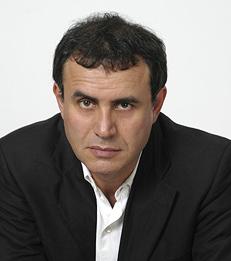Opinion
The Dollar Joins the Currency Wars
—


Currency frictions can lead eventually to trade frictions, and currency wars can lead to trade wars.
By Nouriel Roubini
In a world of weak domestic demand in many advanced economies and emerging markets, policymakers have been tempted to boost economic growth and employment by going for export led-growth. This requires a weak currency and conventional and unconventional monetary policies to bring about the required depreciation.
Since the beginning of the year, more than 20 central banks around the world have eased monetary policy, following the lead of the European Central Bank and the Bank of Japan. In the eurozone, countries on the periphery needed currency weakness to reduce their external deficits and jump-start growth. But the euro weakness triggered by quantitative easing has further boosted Germany’s current-account surplus, which was already a whopping 8% of GDP last year. With external surpluses also rising in other countries of the eurozone core, the monetary union’s overall imbalance is large and growing.
In Japan, quantitative easing was the first “arrow” of “Abenomics,” Prime Minister Shinzo Abe’s reform program. Its launch has sharply weakened the yen and is now leading to rising trade surpluses.
Read full article as published in Project Syndicate
___
Nouriel Roubini is a Professor of Economics and International Business and the Robert Stansky Research Faculty Fellow.
Since the beginning of the year, more than 20 central banks around the world have eased monetary policy, following the lead of the European Central Bank and the Bank of Japan. In the eurozone, countries on the periphery needed currency weakness to reduce their external deficits and jump-start growth. But the euro weakness triggered by quantitative easing has further boosted Germany’s current-account surplus, which was already a whopping 8% of GDP last year. With external surpluses also rising in other countries of the eurozone core, the monetary union’s overall imbalance is large and growing.
In Japan, quantitative easing was the first “arrow” of “Abenomics,” Prime Minister Shinzo Abe’s reform program. Its launch has sharply weakened the yen and is now leading to rising trade surpluses.
Read full article as published in Project Syndicate
___
Nouriel Roubini is a Professor of Economics and International Business and the Robert Stansky Research Faculty Fellow.
